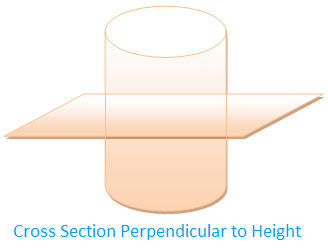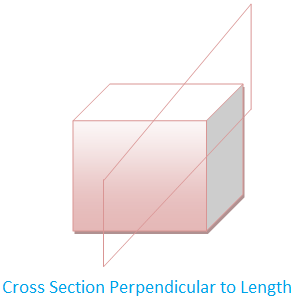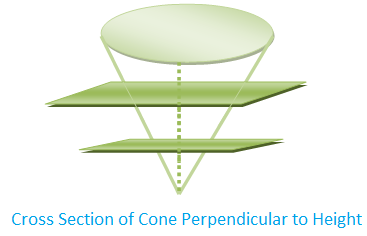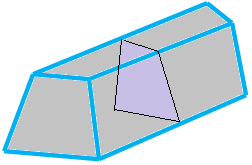Subscribe to our ▶️ YouTube channel 🔴 for the latest videos, updates, and tips.
Cross Section
The cross section of a solid is a plane section resulting from a cut (real or imaginary) perpendicular to the length (or breadth of height) of the solid.
If the shape and size of the cross section is the same at every point along the length (or breadth or height) of the solid then the cross section is uniform.
The two solids shown above have uniform cross sections.
The figure given below is a solid (Cone) whose cross sections perpendicular to height are not uniform.
Volume of a solid figure with uniform cross section
= (Area of the cross section) × length (or height or breadth)
= A × h
Lateral surface area of a solid figure with uniform cross section
= (Perimeter of the cross section) × length (or height or breadth)
= P × h
Total surface area of a solid figure with uniform cross section
= Lateral surface area + Sum of the areas of the two plane ends
= P × h + 2 × A
From Cross Section to HOME PAGE
Didn't find what you were looking for? Or want to know more information about Math Only Math. Use this Google Search to find what you need.






New! Comments
Have your say about what you just read! Leave me a comment in the box below. Ask a Question or Answer a Question.